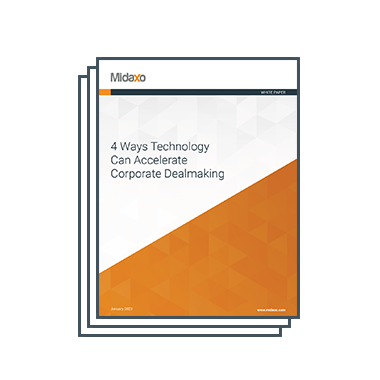Introduction:
So-called “soft skills,” those related to emotional and social intelligence, as well as leadership traits/styles, were deemed by employers to be some of the most vital and desirable skills for employees in 2020. This appreciation of “people” skills, which are in no way “soft,” is a trend the world of M&A has begun to see over the last decade. While for many organizations, hard facts relating to revenue and costs lie at the heart of the deal rationale, the best practitioners understand the less tangible, human side of M&A can be equally, if not more, important.1
Indeed, in today’s era of M&A, intangible assets (such as people, experience, and knowledge) can be the driving force behind value creation. Google, Facebook and Dropbox’s talent-driven “acquihire” M&A activity in recent years is testament to this. Though these intangibles can be difficult to quantify and measure, they can no longer be an after-thought to the minutiae of spreadsheet detail. Now, perhaps more than ever, people are truly one of the key components to post-merger integration value creation. How can practitioners retain key talent and enhance cultural fit? Below we outline five best practices for managing and mitigating people-related risks across both due diligence and post merger integration.
1Evidenced by a 2015 study conducted by Mercer in which 300 M&A professionals cited overcoming people issues as a significant component of successful M&A transactions, with employee retention, cultural fit and leadership team concerns ranking as the most critical areas.
Have the Difficult Conversations Early
Employee retention can be a challenge when it comes to M&A as many employees perceive a deal as a threat. Characteristically, many deals are associated with retention issues – often as a result of negative beliefs held by employees, rather than by actual extreme rounds of lay-offs. Negative views often result from uncertainty over the organization’s future direction and job security, perceptions of leadership credibility and a sense of confusion attributed to a lack of effective communication.
Communicating with employees and creating a culture in which they can succeed post-deal are both fundamental to successful integration and value creation. M&A often leaves employees and management feeling left in the dark and anxious about what the future holds. Poor communication from the top filters down and can prevent managers from possessing the necessary information to answer questions asked by employees. In most cases, it is inevitable that many employees will be left questioning how a deal will affect them, what support they will receive throughout the integration process, and whether a role in the new organization will exist for them at all. Ultimately, lack of communication can promote uncertainty and trust issues, resulting in a detrimental effect on employee engagement and retention. For all these reasons, it is imperative that communication about both the upside and downside of the deal takes place early.
Actively Manage Retention
The following best practice principles can assist in reducing the likelihood that retention issues become apparent during the integration phase of an M&A project:
- Provide sufficient access to information – for instance, management should communicate why the deal is advantageous and ensure the message resonates with employees;
- Monitor workloads – during the integration process, employees are often required to take on additional workloads. It is imperative employees feel they can cope and know where the support channels are in times of need;
- Provide opportunities for on-going learning and professional development – the cost of human capital attrition can far outweigh the costs of training and development. Furthermore, such initiatives send the message that employees are valued;
- Meet regularly with employees via one-on-one meetings and/or departmental catch-ups. Discuss with employees how they are coping in their new roles and with any increased workload;
- Provide tangible performance management objectives and incentivize key talent;
- Encourage employee focus groups;
- Provide sufficient managerial support – managers can be role models and play a critical part in the retention of employees during the integration process;
- Develop employee engagement surveys to monitor employee sentiment of the deal.
Keep Information Channels Open
A lack of information over whether employees will keep their jobs is likely to engender employee fear. This can easily create a negative atmosphere of distrust of management, plus an unhealthy competition for jobs (employees may sense their co-workers or counterparts from the other organization may be stealing their jobs). This can bring about annoyances, resentment and generally result in employees being less effective in their working practices during the critical integration period.
To overcome the above, management must not only be provided with adequate information relating to the deal, but they must also be trained on how to deliver it. They must learn how to coach others and convey a sense of empathy when it comes to the feelings and well-being of their staff. They must learn about change management and how to deal with resistance (which is an inevitable part of integration). Employee productivity can often dip when staffing decisions are being made; for example, the fear of making a mistake and being exposed can stifle creativity and efficiency as employees become increasingly cautious for fear of job loss.
Once the post-merger integration steps are underway, an organization can easily forget to take stock and check its progress, but this is essential to maximizing deal value. It can be challenging to redirect the integration process, but, when necessary, it is essential to achieving the desired outcome – thus, communication is key.
Address Fears While Instilling the Vision for the Future
The art of good communication lies in keeping the balance between addressing fears and instilling the vision for the future of the organization. It is important at this stage to bring out the narrative around the deal, how it came to be and how it will ultimately be beneficial.
- Be clear on whether the deal represents a merger or an acquisition;
- Articulate the vision/mission and goals, and be consistent in the message. Avoid wasted time where employees speculate on what is happening, potentially leading to loss of morale and productivity;
- Translate the message to different parts of the organization if necessary – the language used in communicating to the finance team is likely to differ from that used in addressing IT;
- Seek objective feedback from employees;
- Set clear timetables and ensure employees know what they are accountable for and to whom;
- Consider outside help from external advisors/consultants, if necessary;
- Design teams and assign leaders who can be used as sounding boards during the integration process.
Combat Employee Flight During Integration By Managing Risks & Opportunities Throughout the Deal’s Lifecycle
During the integration process, it is essential to keep employee turnover low for both business continuity and to realize the intended benefits of a deal. Additionally, the financial implications of recruiting new employees can be significant. Perhaps most fundamental, however, is that failure to retain employees can result in a loss of knowledge/attrition of human capital and have a damaging effect on overall operations. This will likely have a domino effect throughout the organization and exacerbate the negative sentiment of an already disenfranchised workforce. Companies considering M&A should, therefore, adopt a long-term vision to talent retention.
HR is seldom involved with the appraisal of target companies as part of the M&A pipeline management. However, if it is not privy to the M&A strategy and the appraisal of talent and culture in the early stages of deal formulation and due diligence, it will have to play catch-up during the integration process. This will inevitably result in the need for a reactive approach to solving problems, which could have been avoided with some up-front work. Accordingly, HR should work closely with other parts of the organization to ensure staffing decisions are made with the overarching deal strategy in mind. This can help in retaining key talent (for instance, via the alignment of pay and benefits).
During the integration process, the selection of employees will be made in context to the operational requirements of the new organization. If layoffs are made too hastily, human capital can be lost. Paradoxically, the process of recruiting new employees (or even re-recruiting ex-employees) can cost significantly more than retaining original employees.
Takeaways:
To maximize deal value, those undertaking M&A projects must devote sufficient time and resources to managing and mitigating people-related risks across both due diligence and post-merger integration (PMI). This all ultimately points to the importance of HR due diligence and leadership selection – involving HR early in the deal process is critical to successfully managing the people aspect of M&A. These strategies must become an inherent and genuine part of each buyer’s M&A strategy.





